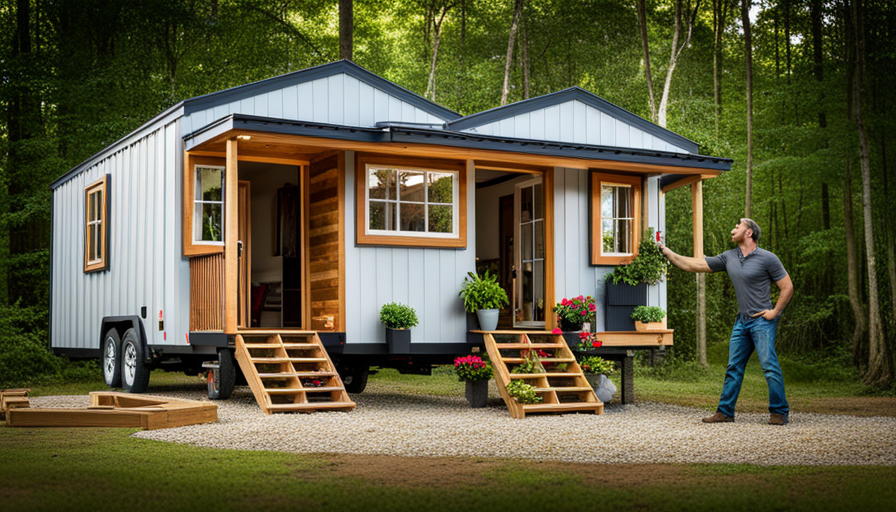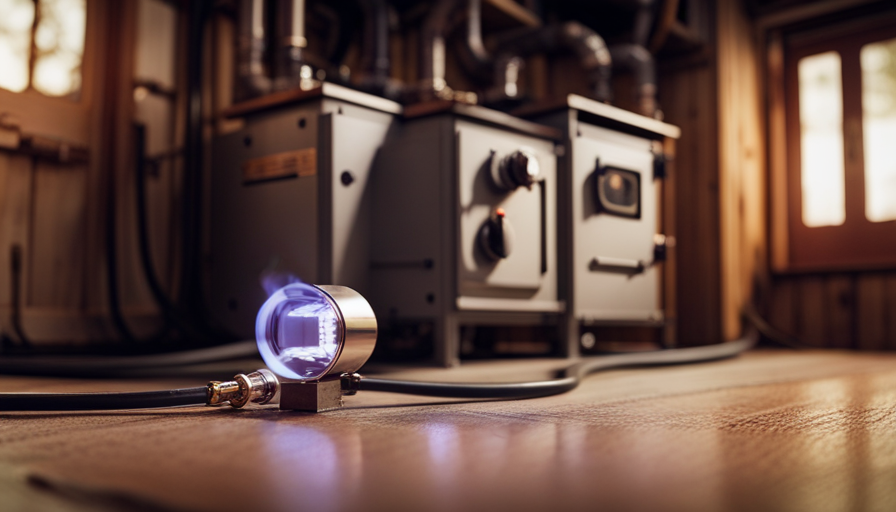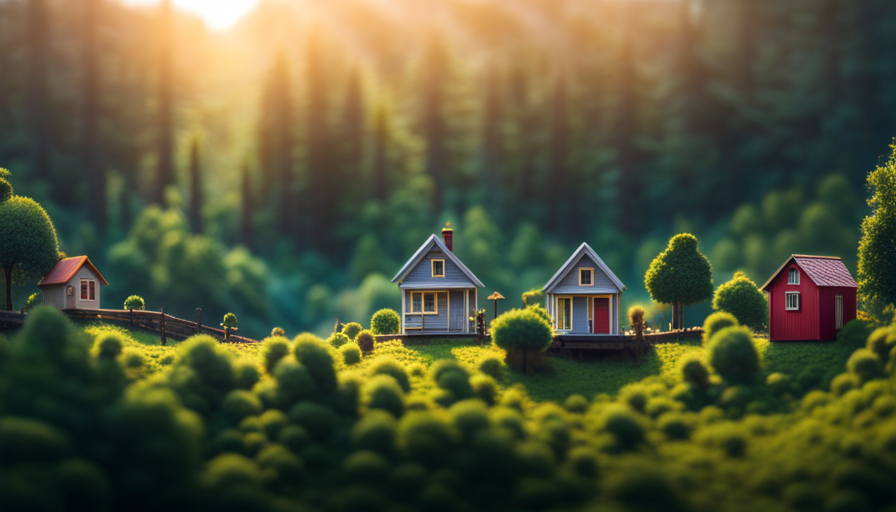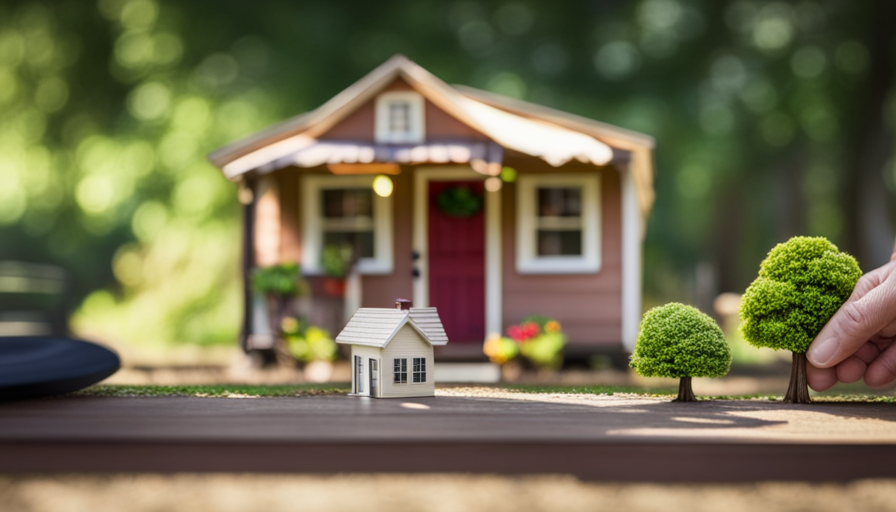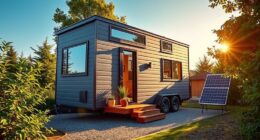Are you ready to embark on a journey of creativity and sustainability? Allow me to introduce you to a remarkable individual who excels in creating dream homes in small sizes. Meet the tiny house builder from Alabama who showcased their innovative designs and exceptional construction skills on HGTV, captivating the audience.
With a focus on sustainability and eco-friendly practices, this builder has revolutionized the way we think about housing. From their early beginnings and influences to their expansion and future plans, this article will take you on a fascinating exploration of their remarkable journey.
Along the way, you’ll discover the challenges they’ve faced in the industry, as well as the inspiring success stories and client testimonials that have propelled them to the forefront of the tiny house movement. Get ready to be inspired and embrace a new way of living.
Key Takeaways
- Alabama Tiny House Builder has a background in architecture and design, and a passion for eco-friendly materials and efficient design principles.
- The company offers unique designs and features, including foldable walls and smart home technology, as well as customization options for homeowners.
- Sustainability is a priority for Alabama Tiny House Builder, with the use of renewable energy sources, reclaimed and recycled materials, and energy-efficient designs.
- The collaboration with HGTV has provided a platform to showcase the benefits of tiny homes and has ignited a passion for greener living in people across the country.
Early Beginnings and Influences
You started your journey as a tiny house builder in Alabama after being inspired by the unique designs and creative solutions you saw on HGTV. Growing up, I was always fascinated by architecture and design. I would spend hours sketching floor plans and imagining different ways to maximize space. These childhood experiences sparked my passion for creating innovative living spaces.
As I got older, I sought out influential mentors who shared my love for tiny homes and sustainable living. They taught me about the importance of using eco-friendly materials and efficient design principles. Through their guidance, I learned how to incorporate energy-saving features and clever storage solutions into my tiny house designs.
This early exposure to sustainable living and design principles set the foundation for my career as a tiny house builder. Today, I continue to draw inspiration from the unique designs and innovative ideas I see on HGTV and other platforms. My journey to becoming a tiny house builder has been a fulfilling one, and I’m excited to share my experiences with you.
Journey to Becoming a Tiny House Builder
Embarking on a path of crafting dream dwellings, I transformed my passion for creating cozy homes into a thriving business. My journey to becoming a tiny house builder has been filled with personal growth and overcoming obstacles. Starting out, I had to learn the ins and outs of construction and design, honing my skills through trial and error. It wasn’t always easy, but each challenge I faced only fueled my determination to succeed.
One of the biggest obstacles I encountered was finding a way to stand out in the competitive world of tiny house building. I knew I needed to offer something unique to attract customers. Through my perseverance and creativity, I developed innovative designs and incorporated unique features into my tiny houses. This set me apart from other builders and allowed me to create one-of-a-kind homes that captured the imagination of my clients.
Transitioning into the subsequent section about ‘innovative designs and unique features,’ I began to explore new possibilities in the tiny house industry.
Innovative Designs and Unique Features
Step into the world of tiny house construction and discover the captivating realm of innovative designs and unique features that will leave you in awe.
Tiny house builders in Alabama offer a wide range of customization options, allowing homeowners to create a living space that is tailored to their specific needs and preferences. From clever storage solutions to multi-purpose furniture, these builders excel at maximizing space efficiency without sacrificing comfort or style.
One of the most impressive aspects of Alabama tiny house designs is the ability to incorporate unique features that set them apart from traditional homes. For example, some builders have created tiny houses with foldable walls or retractable roofs, allowing for a seamless connection between indoor and outdoor living spaces. Others have incorporated smart home technology, enabling residents to control various aspects of their homes with just a few taps on their smartphones.
In addition to the creative designs and features, Alabama tiny house builders also prioritize sustainability and eco-friendly practices. Many utilize renewable energy sources such as solar panels and rainwater collection systems, reducing their carbon footprint and minimizing reliance on traditional utilities. By seamlessly blending style, functionality, and environmental consciousness, these builders are leading the way in the tiny house movement.
Transitioning into the subsequent section about ‘focus on sustainability and eco-friendly practices,’ Alabama tiny house builders go beyond just creating stunning homes.
Focus on Sustainability and Eco-Friendly Practices
Get ready to explore a world where sustainable living and eco-friendly practices take center stage in the realm of tiny house construction. As an Alabama tiny house builder who was featured on HGTV, my focus is on creating homes that not only meet the unique needs and desires of homeowners, but also prioritize sustainability and energy efficiency.
When it comes to materials, I make a conscious effort to use sustainable options whenever possible. This includes using reclaimed or recycled materials, such as reclaimed wood for flooring or countertops. Additionally, I prioritize energy-efficient designs by incorporating features like solar panels, energy-efficient appliances, and high-quality insulation. These choices not only reduce the environmental impact of the homes but also help homeowners save money on their energy bills.
To help you better understand the sustainable practices I follow, here’s a table showcasing some of the sustainable materials and energy-efficient designs I incorporate into my tiny house construction:
| Sustainable Materials | Energy-Efficient Designs |
|---|---|
| Reclaimed wood | Solar panels |
| Recycled countertops | Energy-efficient appliances |
| Bamboo flooring | High-quality insulation |
By focusing on sustainability and eco-friendly practices, I aim to create homes that not only provide a comfortable and stylish living space but also contribute to a greener future. However, like any industry, the tiny house construction industry faces its own set of challenges.
Challenges Faced in the Industry
However, the industry of sustainable and eco-friendly tiny house construction faces a multitude of challenges that must be overcome in order to create a greener and more sustainable future.
One of the main challenges is the need for industry growth. While the demand for tiny homes is increasing, the industry itself is still relatively small and needs to expand in order to meet the growing demand. This includes finding ways to scale up production, attract more skilled workers, and create a wider range of affordable options for consumers.
In addition to industry growth, regulatory challenges also pose significant obstacles. Building codes and zoning regulations vary from state to state, making it difficult for tiny house builders to navigate the legal landscape. Many areas have minimum size requirements or restrictions on where tiny homes can be located, which can limit the options available to builders and potential buyers.
Despite these challenges, there is a silver lining. Through collaboration with HGTV, we’ve been able to showcase the benefits of sustainable and eco-friendly tiny homes to a wider audience. This exposure has not only increased awareness and interest in tiny house living, but it’s also sparked conversations about the need for regulatory changes to support the industry’s growth and encourage more sustainable housing options.
Collaboration with HGTV
Thanks to our partnership with HGTV, we’ve been able to showcase the incredible benefits of sustainable and eco-friendly tiny homes, igniting a passion for greener living in people across the country. Our collaboration with HGTV has provided us with a platform to reach a wider audience, allowing us to share our expertise and passion for tiny home construction.
Behind the scenes, our collaboration with HGTV has been a valuable experience. We have had the opportunity to work with talented producers and designers who share our vision for creating functional and beautiful tiny homes. Together, we have been able to highlight the unique features and innovative designs that make our homes stand out in the market.
To give you a glimpse of what goes on during the production of our HGTV shows, here is a breakdown of the collaboration process:
| Stage | HGTV Collaboration |
|---|---|
| 1 | Initial Concept Development |
| 2 | Design and Planning |
| 3 | Construction and Building |
| 4 | Final Reveal and Showcase |
Through this collaborative process, we have been able to create shows that not only entertain, but also educate viewers about the possibilities of tiny home living. Our partnership with HGTV has truly been a game changer for us, allowing us to reach more people and inspire them to embrace sustainable living.
As we transition into the next section, we will now delve into how our collaboration with HGTV has allowed us to showcase exceptional craftsmanship in our tiny homes.
Showcasing Exceptional Craftsmanship
Our collaboration with HGTV has provided us with a unique opportunity to demonstrate the unparalleled artistry and skill that goes into crafting our eco-friendly and sustainable homes. At Alabama Tiny House Builder, we take pride in our exceptional craftsmanship and attention to detail, ensuring that every aspect of our homes is meticulously designed and executed.
When it comes to showcasing exceptional craftsmanship, our team goes above and beyond to create homes that are not only visually stunning but also functional and durable. From the moment we start planning a project to the final touches, we pay close attention to every detail, ensuring that our homes are of the highest quality.
To achieve this level of craftsmanship, we rely on a team of skilled artisans who bring their expertise and passion to every project. From the carpenters who meticulously construct the tiny house frames to the craftsmen who carefully install the intricate finishes, our team is dedicated to creating homes that are truly works of art.
In addition, our commitment to exceptional craftsmanship extends beyond the physical construction of our homes. We also prioritize using sustainable and eco-friendly materials, ensuring that our homes are not only beautiful but also environmentally responsible.
By showcasing our exceptional craftsmanship and attention to detail, we’ve been able to create homes that have garnered rave reviews and satisfied clients.
In the following section, we’ll share some of our client testimonials and success stories, highlighting the impact our homes have had on their lives.
Client Testimonials and Success Stories
What our clients have to say about their experience with our homes will leave you inspired and eager to join the eco-friendly living movement. We take great pride in our commitment to client satisfaction and ensuring that every homeowner is not only happy with their tiny house, but also with the impact it has on their community. Our clients have shared numerous success stories about how living in a tiny house has positively transformed their lives.
From reducing their carbon footprint to living a simpler and more sustainable lifestyle, our homes have made a lasting impact on our clients and the communities they are a part of.
One client, Sarah, expressed her gratitude for the sense of community that our tiny house development has fostered. She mentioned how she has formed strong friendships with her neighbors and how they often gather for outdoor barbecues and gardening sessions.
Another client, John, shared how living in a tiny house has allowed him to pursue his dream of starting his own business. With the money saved on housing expenses, he was able to invest in his entrepreneurial venture and has seen great success.
As we continue to receive glowing testimonials and witness the positive effects of our tiny houses on communities, we are excited to expand our reach and bring the benefits of eco-friendly living to even more people.
Join us in our journey towards a sustainable and fulfilling future.
Expansion and Future Plans
In light of our growing success and the positive impact of our tiny houses, we are excited to lay out our plans for expansion and the future. As the Alabama tiny house builder who was featured on HGTV, we have seen a steady increase in demand for our unique and affordable homes. To ensure that we can meet this demand and continue to provide high-quality tiny houses, we have developed a comprehensive strategy for expansion.
One of our key expansion strategies is to tap into emerging market trends. We have noticed a growing interest in sustainable and minimalist living, which aligns perfectly with the tiny house movement. By staying ahead of these trends and offering innovative designs that cater to the needs of our customers, we aim to capture a larger market share and establish ourselves as the go-to tiny house builder in Alabama.
To communicate our expansion plans effectively, we have created a table that highlights our key objectives and timelines. This table will help our audience visualize our growth trajectory and understand our commitment to delivering exceptional tiny houses.
In the next section, we will delve into how our expansion efforts are inspiring others to embrace the tiny house movement, without missing a beat.
Inspiring Others to Embrace the Tiny House Movement
As the tiny house craze sweeps the nation, it’s hard not to be envious of those who’ve embraced the minimalist lifestyle and escaped the clutches of the traditional housing market. Minimalist living: is it for everyone? That’s a question many people ask when considering the tiny house movement.
While living in a tiny house may not be suitable for everyone, it offers numerous benefits that are worth considering. One of the most significant advantages of downsizing to a tiny house is the financial savings it provides. By eliminating the need for a large mortgage and reducing utility costs, tiny house dwellers can save a substantial amount of money. Additionally, the smaller space encourages a simpler lifestyle, reducing the need for excessive spending on material possessions.
Another financial benefit of tiny house living is the potential for increased mobility. Many tiny houses are built on wheels, allowing homeowners to easily relocate if desired. This flexibility can be especially appealing for those who enjoy traveling or have job opportunities that require frequent moves.
The tiny house movement offers a unique and appealing alternative to traditional housing. While it may not be suitable for everyone, the financial benefits and simplicity of minimalist living make it an attractive option for those looking to downsize and embrace a more intentional way of life.
Frequently Asked Questions
How much does it cost to build a tiny house with this Alabama builder?
The cost breakdown for building a tiny house with this Alabama builder varies depending on the design. Popular designs range from $30,000 to $100,000, considering factors like size, materials, and additional features.
Can you customize the design and layout of your tiny house?
Yes, you can customize the design and layout of your tiny house. While it allows for personalization and creativity, it’s important to consider factors like space optimization, functionality, and budget constraints.
What materials are typically used in the construction of these tiny houses?
Typically, tiny houses are constructed using lightweight and sustainable materials such as wood, metal, and recycled materials. This allows for easier mobility and lower costs. However, it may also result in less durability and limited design options. To maximize space, consider using multipurpose furniture and utilizing vertical storage.
Do these tiny houses come with any warranties or guarantees?
Yes, there are maintenance requirements for these tiny houses. Regular upkeep is necessary to ensure their longevity and functionality. Additionally, these houses can be transported to different locations, providing flexibility for the homeowners.
Are there any financing options available for purchasing a tiny house from this builder?
Yes, there are financing options available for purchasing a tiny house from our builder. We offer loan options to make it easier for you to own your dream tiny home.
Conclusion
In conclusion, this Alabama tiny house builder has left an indelible mark on the industry. They’ve shown a commitment to sustainability and eco-friendly practices, from their humble beginnings to their innovative designs. Despite the challenges they’ve faced, their exceptional craftsmanship has garnered praise from clients and industry experts alike. They continue to expand and inspire others to embrace the tiny house movement. It’s clear that this builder isn’t just creating houses, but creating a lifestyle. So, if you’re ready to downsize and live big in a tiny house, look no further than this HGTV-featured builder.
Hi, I’m Emma. I’m the Editor in Chief of Tiny House 43, a blog all about tiny houses. While tree houses are often associated with childhood, they can be the perfect adult retreat. They offer a cozy space to relax and unwind, surrounded by nature. And since they’re typically built on stilts or raised platforms, they offer stunning views that traditional homes simply can’t match. If you’re looking for a unique and romantic getaway, a tree house tiny house might just be the perfect option.
